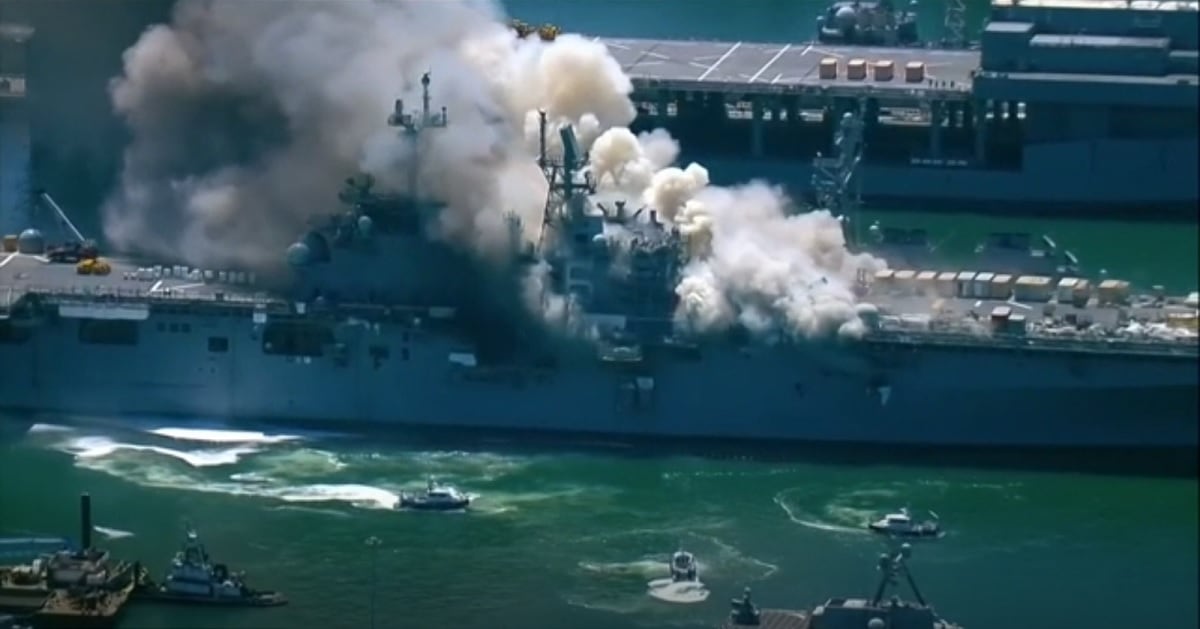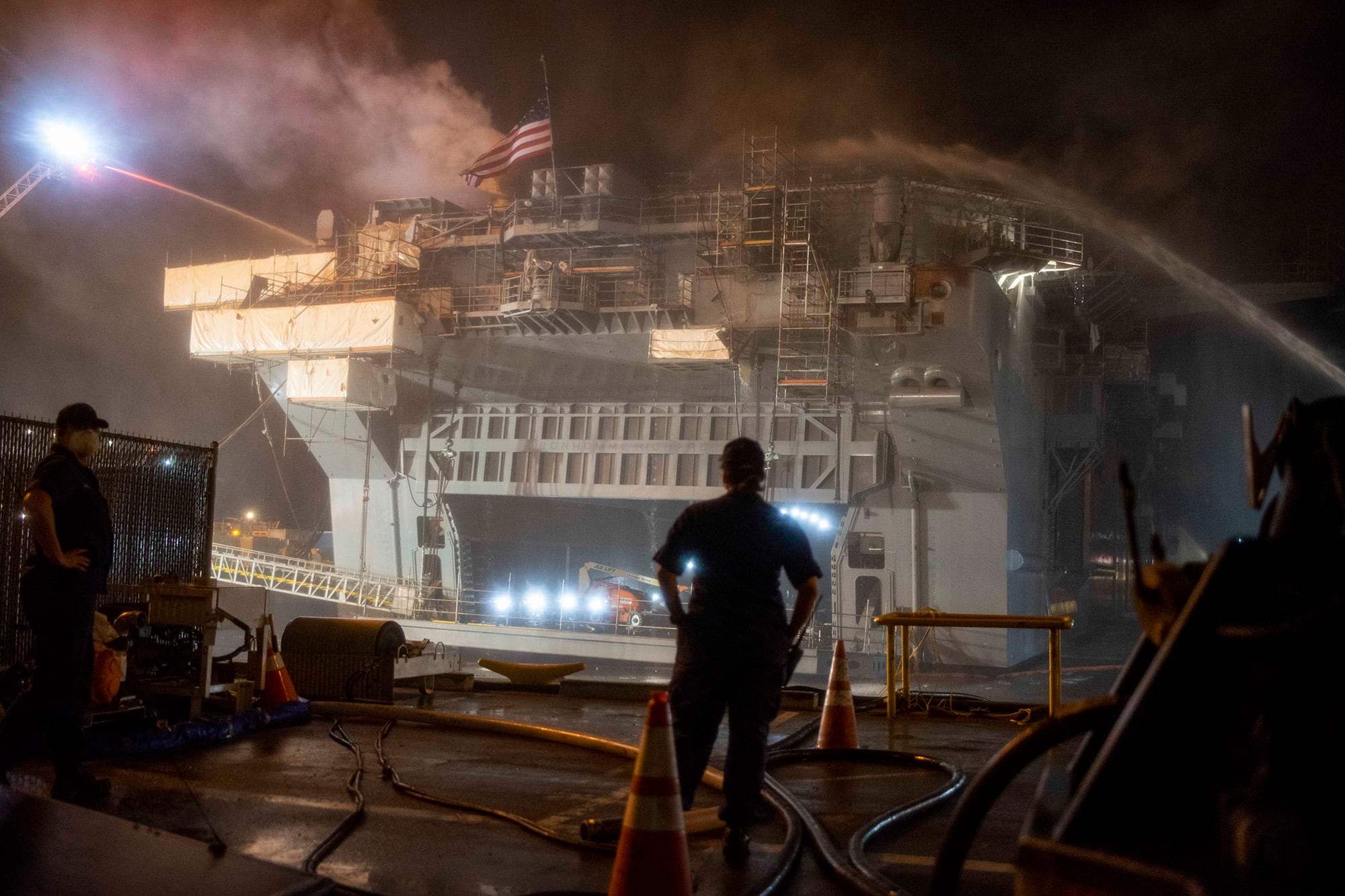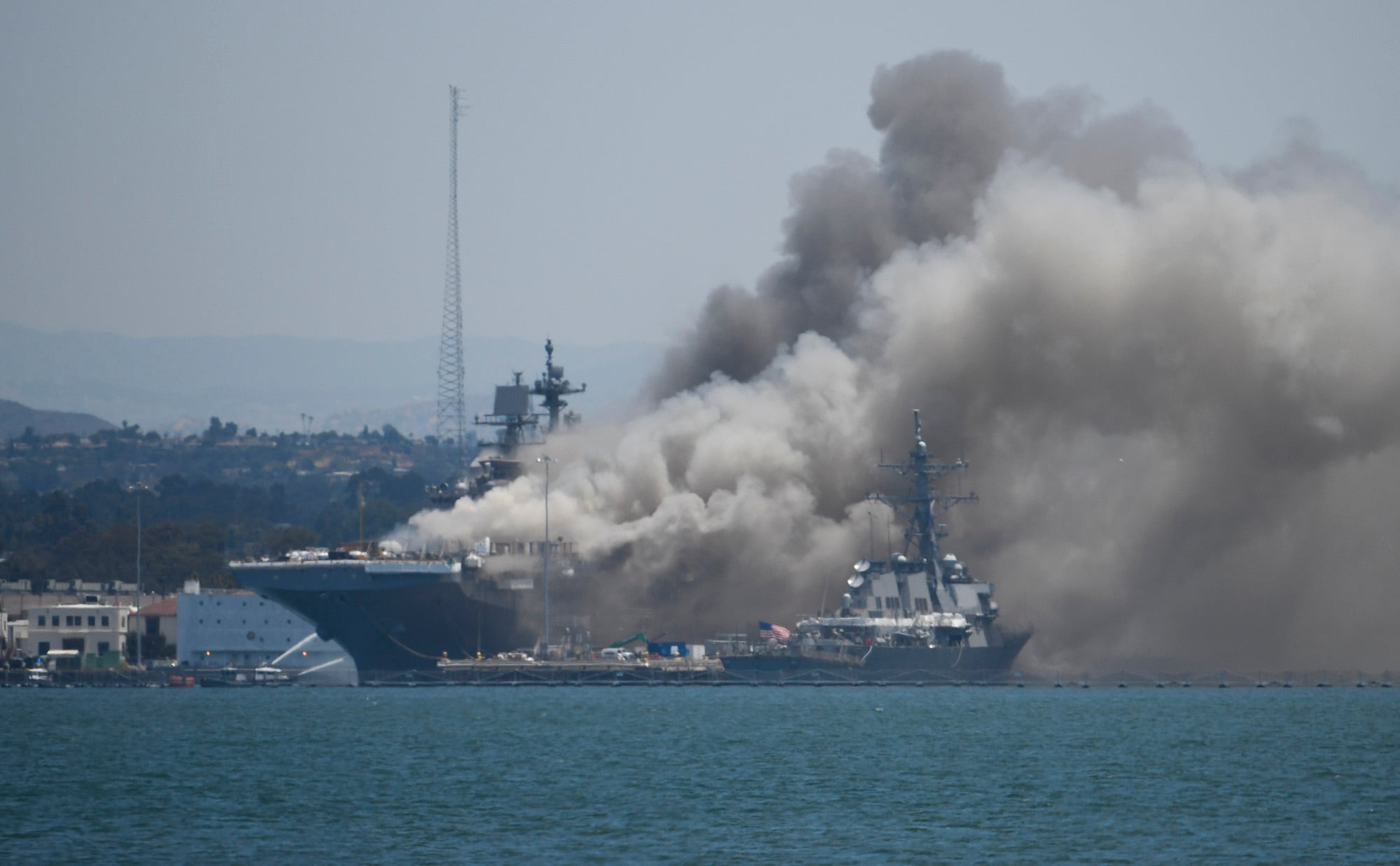WASHINGTON – U.S. Navy brass is telling sailors and contractors to put fire safety at the center of their work in the shipyards and on the waterfront in the wake of a catastrophic fire aboard the amphibious assault ship Bonhomme Richard.
As Naval Sea Systems Command continues its formal assessment of the damage to Bonhomme Richard, the Navy has both sailors across the organization and contractors working on the ships reviewing their procedures and ensuring they are doing everything possible to prevent a second tragedy.
Adm. Michael Gilday, the chief of naval operations, said the enterprise-wide effort was to prevent a similar event from taking place, a lesson he drew from the Navy’s response to a string of accidents in 7th Fleet in 2017.
“Could there be another Bonhomme Richard waiting to happen? If you go back to 2017, who would have predicted we’d have had two collisions of that magnitude within a month?” Gilday said in a July 16 interview with Defense News. “So, I’m not waiting for ‘No. 2’ to decide we have a trend here. In a situation like this, one incident is enough for me to determine that there could be a trend and I’m not going to leave it to chance that there might be.”
RELATED

In the wake of the fire, he ordered fleet commanders to send a lengthy list of requirements to the waterfront, including a mandate to do fire safety inspections of every space on every ship. So-called “zone inspections” of each space on a ship are generally spread out over months, rather than packed into a week.
The orders also included reviewing maintenance records on all damage control equipment – such as fire hoses and fire main connections, fire extinguishers, fixed fire suppression systems and firefighting gear – and ensure it is 100 percent accounted for. Additionally, each in-port duty section (a rotating group of sailors from the crew designated to stay on board the ship for 24 hours) was required to undergo a formal assessment as to their proficiency in firefighting and validate that they were properly manned to be effective.
Contractors and shipbuilders have also been warned by the Navy to take fire safety seriously. In the days following the Bonhomme Richard fire, two minor fires – one on board the amphibious assault ship Kearsarge at General Dynamics NASSCO shipyard and another on the Navy’s future carrier John F. Kennedy at Newport News shipbuilding – have curtailed work and prompted a doubling down on safety.
In a Friday letter, Navy’s top acquisitions official James Geurts told shipbuilders and contractors to take Bohnomme Richard as a lesson.
"Anyone who steps aboard our ships must be ever vigilant about ensuring fire safety," Geurts wrote. "I urge you to use [the recent fire] to ensure that our work spaces are clean, that unnecessary clutter is removed, that all fire safety measures are being followed and that there is unrestricted access to firefighting and damage control equipment."
‘Gutted’
The safety crackdown follows the Navy’s worst in-port disaster since the 2012 fire on board the attack submarine Miami, which suffered a major conflagration while in deep maintenance at Portsmouth Naval Shipyard in Maine. That incident was later determined to be arson.
The Bonhomme Richard fire, which experts fear may have damaged the “big deck” amphib beyond repair, raised troubling questions about how prepared sailors are to combat one of their most fearsome enemies: a shipboard fire, a threat they are trained to deal with from their earliest days in Boot Camp.

In a letter this week from Gilday to all Navy flag officers and top enlisted leaders, he detailed how a series of explosions and a 1,200-degree inferno caused “extensive damage” to 11 of Bonhomme Richard’s 14 decks.
“There is fire and water damage, to varying degrees, on 11 of 14 decks,” Gilday wrote. “With the flight deck as a reference, I walked sections of the ship 5 levels below and had the opportunity to examine the superstructure.
“The island is nearly gutted, as are sections of some of the decks below; some perhaps, nearly encompassing the 844 ft length and 106 ft beam of the ship ([Naval Sea System Command’s] detailed assessment is ongoing). Sections of the flight deck are warped/bulging.”
The fire on the Bonhomme Richard broke out the morning of July 12 while it was pierside in San Diego, California, undergoing maintenance. The blaze was aided by wind and explosions, Gilday wrote.
“While response from the crew and federal firefighters was rapid, preliminary reports indicate there were two main factors that contributed to the intensity, scope, and speed of the fire,” Gilday wrote. “First was wind that fueled the fire as the vehicle storage area leads to the well deck, which opens to the air at the stern gate. The second were the explosions, one in particular, reportedly heard about 13 miles away.
“The explosions, some were intense, and the uncertainty of their location and timing, led to a situation, that might have been under control late Sunday night, but expanded into a mass conflagration, spreading quickly up elevator shafts, engine exhaust stacks, and through berthing and other compartments where combustible material was present.”
The Navy has launched dual investigations into the fire: A safety investigation, which are generally not released to the public so that witnesses can feel free to speak openly, and a more formal administrative investigation, which generally comes with disciplinary recommendations and are releasable to the public.
David B. Larter was the naval warfare reporter for Defense News.





